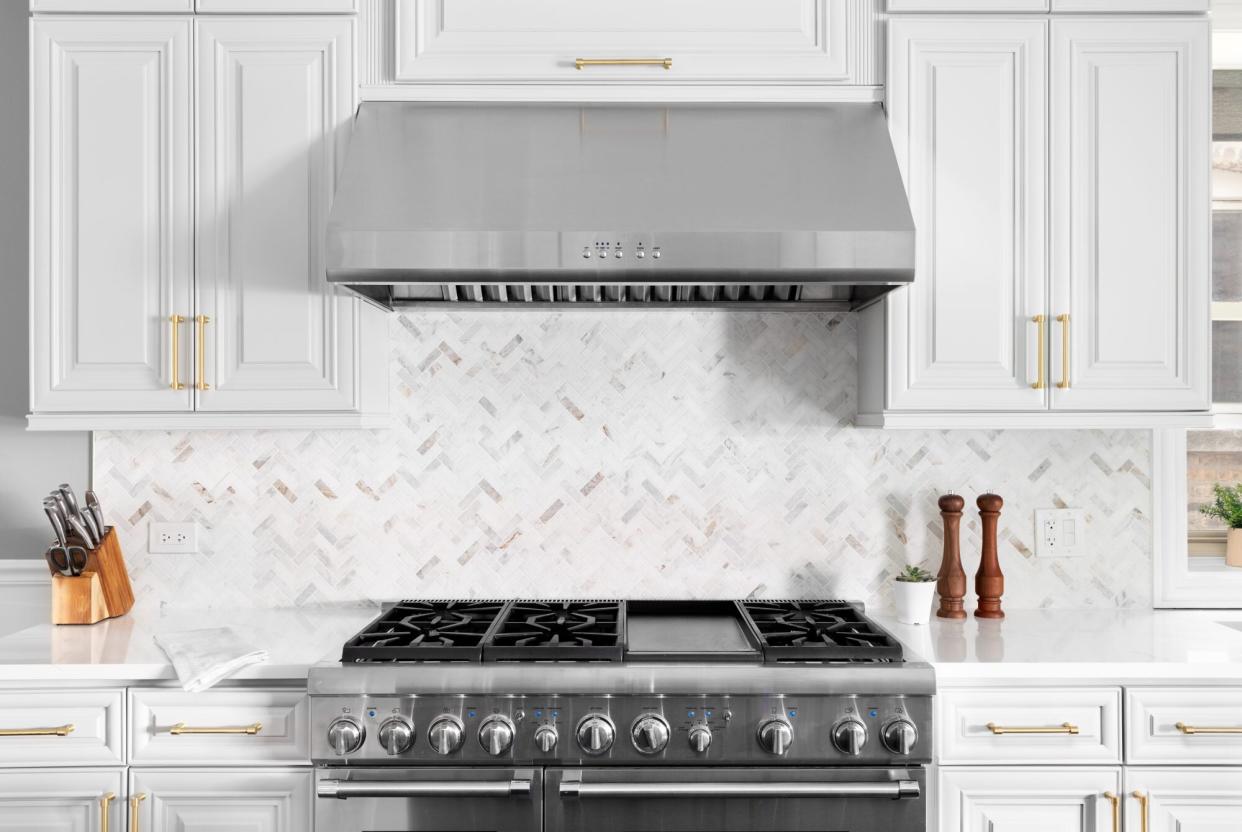How to Put Out a Grease Fire—and Prevent One From Happening in the First Place

Joe Hendrickson / GETTY IMAGES
TABLE OF CONTENTS
On This Page
Grease Fire Causes
How to Put Out a Grease Fire
What Not to Do
Preventing Grease Fires
It's always important to keep a watchful eye on your stove and oven whenever you're making a delicious dish. This is especially necessary when you're working with specific ingredients, like oil. When heated past its smoke point, oil can pose a safety hazard: It can spark a grease fire in your kitchen if you don't monitor it closely.
If the worst happens and your oil does catch fire, being prepared will help you put it out quickly and safely. We're here to help with that: We asked professional chefs and cleaning experts to share their best techniques for putting out a grease fire—and how to prevent it from happening altogether.
Why Grease Fires Happen
Kitchen grease fires happen when oil overheats beyond its smoke point and catches fire, says Lisa Brooks, the chef and owner of Heart & Soul, a personal chef service. "The most common reason for grease fires is leaving the heating oil unattended," she says. "You should never begin to heat oil in a pan and walk away. Even if you were cooking on a higher heat than you should, you would still be able to see the smoking oil and remove it or lower the heat before it were to catch fire."
Grease fires can also occur when water splashes in grease, says Adjoa Courtney, who is professionally known as Chef Joya, a North Carolina-based vegan personal chef. When the grease splatters, this can cause the flame to hit other surfaces around your stove and spread.
How to Put Out a Grease Fire
Whether you are using your stove or oven, the first step to putting out a grease fire is to turn off the heat source—and put on oven mitts or other protective gear as quickly as possible. As an additional safety precaution, call your local fire department immediately to alert them of the grease fire, even if you are able to put it out yourself. Then, follow these expert-approved steps to extinguish the flames.
Cover the Fire
The best way to stop a grease fire in its tracks is to put a lid on the pan from the side, according to Brooks. "You can also use a sheet pan or another clean dry pan to cover and extinguish the flame," she says. Always use a metal lid or pan to smother the fire, as glass iterations can shatter, and leave it there until the pan cools. Try using a long wooden spoon to put the lid on the fire so you don't get too close and potentially burned, adds Courtney.
Add Salt or Baking Soda
You can also suppress the fire with salt or baking soda, our experts note. These ingredients release carbon dioxide, which removes the oxygen the fire needs to spread.
Use a Fire Extinguisher
Always keep a fire extinguisher in your kitchen, but make sure to have the right one and the training to use it, according to the U.S. Consumer Product Safety Commission. Class B or K extinguishers are safe to use on grease fires, says Brooks. Direct the extinguisher on the flames to smother them.
What Not to Do When Putting Out a Grease Fire
There are some things you should never do when attempting to put out a grease fire. First up: Never use water or a wet cloth, since both could increase the flame. The water actually vaporizes once it hits the grease and can spread the flame as its particles go flying.
The same goes for using the wrong dry ingredients to put out the flames. For example, this is a critical time not to confuse baking soda and baking powder. "Never use sugar or baking powder or flour," says Brooks. Starch can fuel the fire; its small grains combust quickly. And never attempt to move the pan when it's on fire, since this can result in spreading the flames and injury.
How to Prevent a Grease Fire
The best way to avoid a grease fire is by never overheating your oil or leaving it unattended, says Courtney. It's also important to understand the difference between your cooking oils and their spoke points. "Vegetable, peanut, and canola oils, for example, have very high smoke points of 400 degrees or higher, which makes them ideal for frying and deep frying," says Brooks. "Olive oil, however, shouldn't be heated higher than 350 degrees."
As always, keep your surfaces clean, says Kathy Cohoon, the director of franchise operations of Two Maids. "To clean up grease spills and mitigate the risk of a fire, sprinkle baking soda over the greasy area, as the baking soda is absorbent and will soak up the grease," she says.
Follow Cohoon's steps to clean a grease spill:
Leave the baking soda on the area for up to three minutes and sweep it up. Repeat if needed.
After the grease has been absorbed, use warm water and a gentle dish soap to clean the whole area and ensure there is no leftover grease residue.

